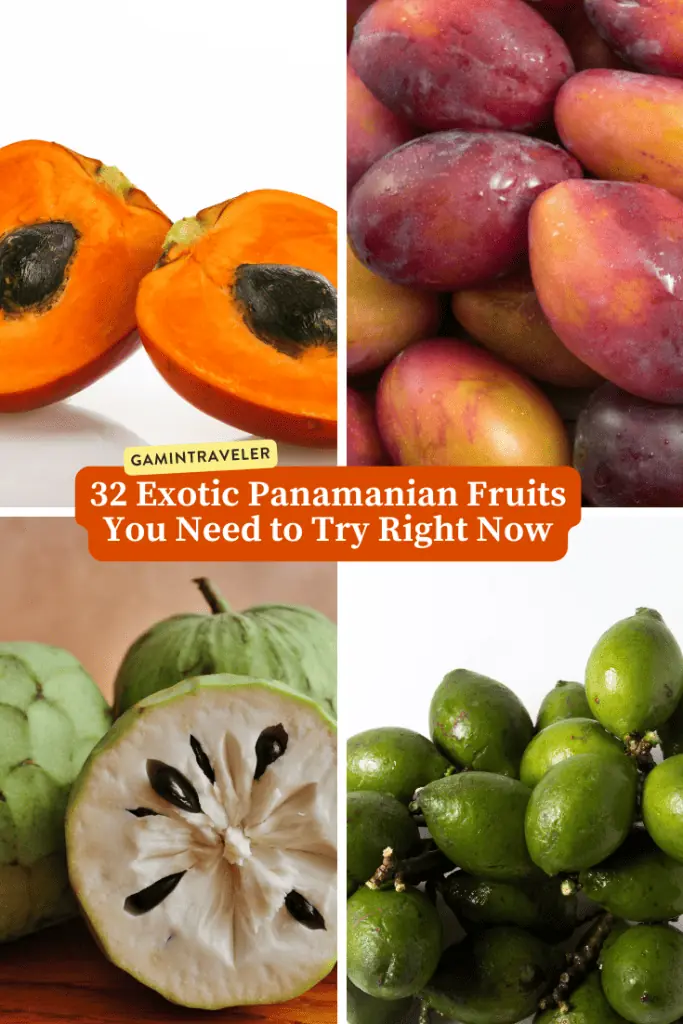

Fruits in Panama – Panama is home to a variety of exotic fruits that are not commonly found in other parts of the world like the Pitahaya and Borojo. This is all because of its incredible location and year-round climate. Let’s discover more of these traditional and exotic Panamanian fruits and make sure you try when you visit!
Related Travel Guides in Panama:
- How To Get From Panama Airport To City Center
- 40 Things To Know Before Visiting Panama And Panama Travel Tips For First Timers
- PANAMANIAN BREAKFAST: BEST 22 BREAKFAST IN PANAMA THAT YOU SHOULD TRY
- Read here best Panamanian food
- Read here Panamanian drinks to try
SIM CARD AT PANAMA AIRPORT
I wouldn’t recommend you to buy a sim card at Panama airport. If you wish comfort you can buy eSim online and if you aren’t in a hurry just go around phone shops in the city and compare prices to buy the cheapest sim card in Panama. Panama sim card for tourist and best Panama eSim
Click here to book your accommodation in Panama!
BOOK YOUR TRAVEL INSURANCE
You can read Heymondo Vs Safetwing cheapest travel Insurance. You can get for $135 USD your Heymondo Travel Insurance with Heymondo discount code valid for 90 days. Read our full Heymondo Travel Insurance Review
You can get Safetywing Travel Insurance for Digital Nomads valid for 28 days Safetywing for $50 USD per month with kids until 10 years old included
What makes Panama good for Exotic Fruits
Panama’s warm, tropical climate and varied geography make it an ideal location for growing exotic fruits. The country’s location near the equator provides plenty of sunshine and rainfall throughout the year, which allows for the growth of a wide variety of fruits.
In addition, Panama’s diverse terrain includes both lowlands and highlands, which allows for the cultivation of different fruits that thrive in different elevations. This means that Panama can grow a variety of fruits, including those that are typically found in higher elevations like coffee and those found in lower elevations like bananas.
Finally, Panama’s rich soil and ample water supply also contribute to the growth of high-quality fruits with rich flavors and nutrients. Overall, Panama’s favorable climate, terrain, and natural resources make it an excellent place for growing a wide range of exotic fruits.
Pitahaya (Dragon Fruit)

This fruit has a bright pink or yellow exterior with green scales. The interior is filled with small, black seeds and a mildly sweet flesh that can be white or pink. Pitahaya is high in vitamin C and is typically in season from May to August.
Mamoncillo (Spanish Lime)
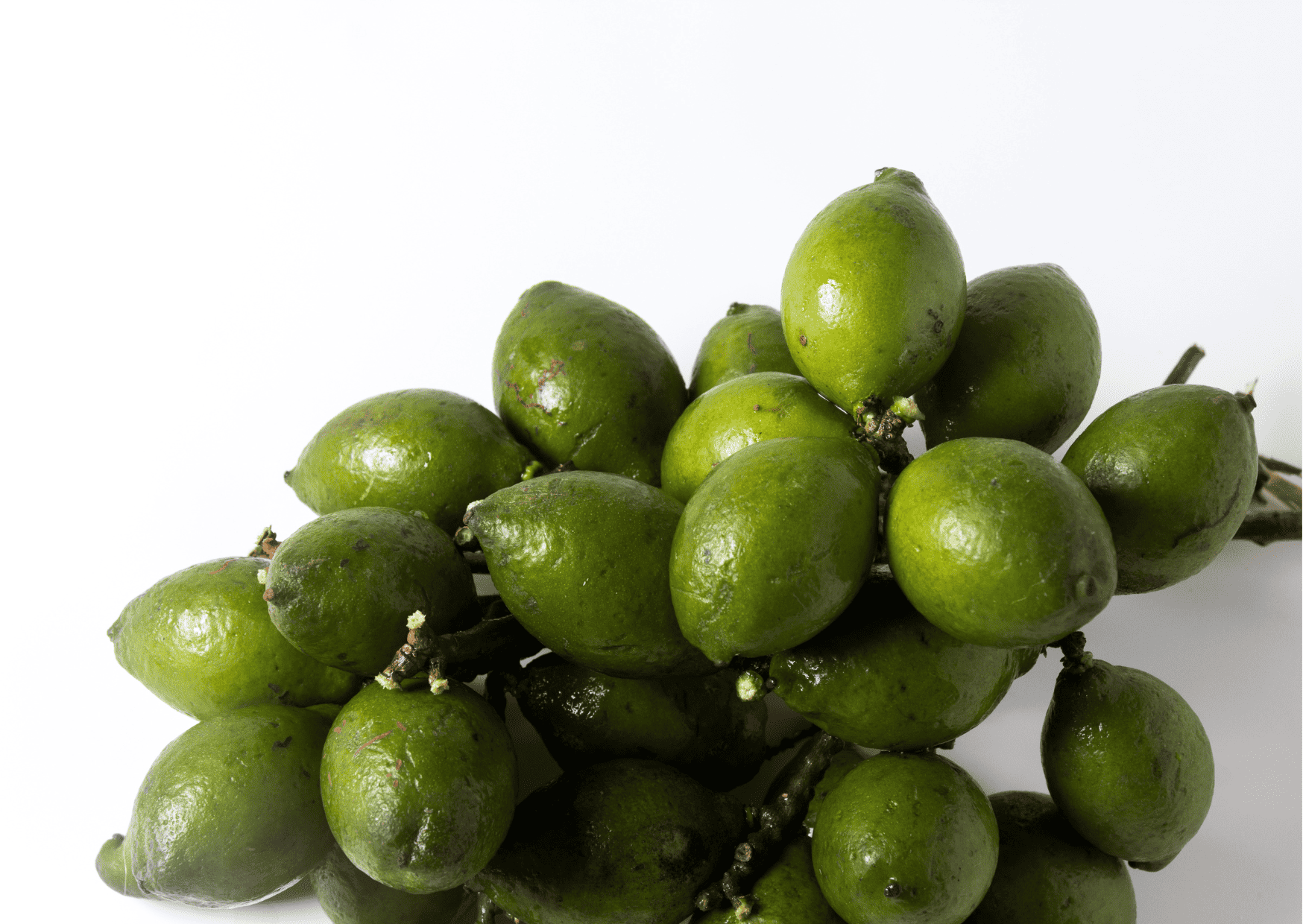
This small, green fruit has a tough outer skin that must be peeled away to reveal a juicy, sweet interior. It is commonly consumed fresh or used to make jams and jellies. Mamoncillo is high in vitamin C and potassium and is in season from August to October.
Marañón (Cashew Fruit)
The marañón fruit grows on the same tree as cashew nuts, but is a separate fruit. It has a sweet and tangy flavor and is commonly consumed fresh or used to make juice. The fruit is in season from January to March.
Zapote (Mamey Sapote)

This large, brown fruit has a sweet, custardy flesh that is often used in smoothies and desserts. The flesh is orange or red and contains a large, brown seed in the center. Zapote is high in vitamin C and is in season from May to July.
Corozo (Açaí Palm Fruit)
Corozo is a small, red fruit that grows on palm trees in Panama. It has a tart, slightly bitter flavor and is often used to make juice or jam. The fruit is in season from February to May and is high in antioxidants.
Granadilla (Passion Fruit)

Granadilla is a small, round fruit with a hard, purple exterior. Inside, it contains a jelly-like flesh filled with small, black seeds. It has a sweet-tart flavor and is commonly used to make juice or desserts. Granadilla is in season from July to September and is high in vitamin C and antioxidants.
Nance (Golden Spoon)

This small, yellow fruit has a sour and sweet flavor and is often used to make jams or eaten fresh. It is in season from May to September and is high in vitamin C.
Caimito (Star Apple)
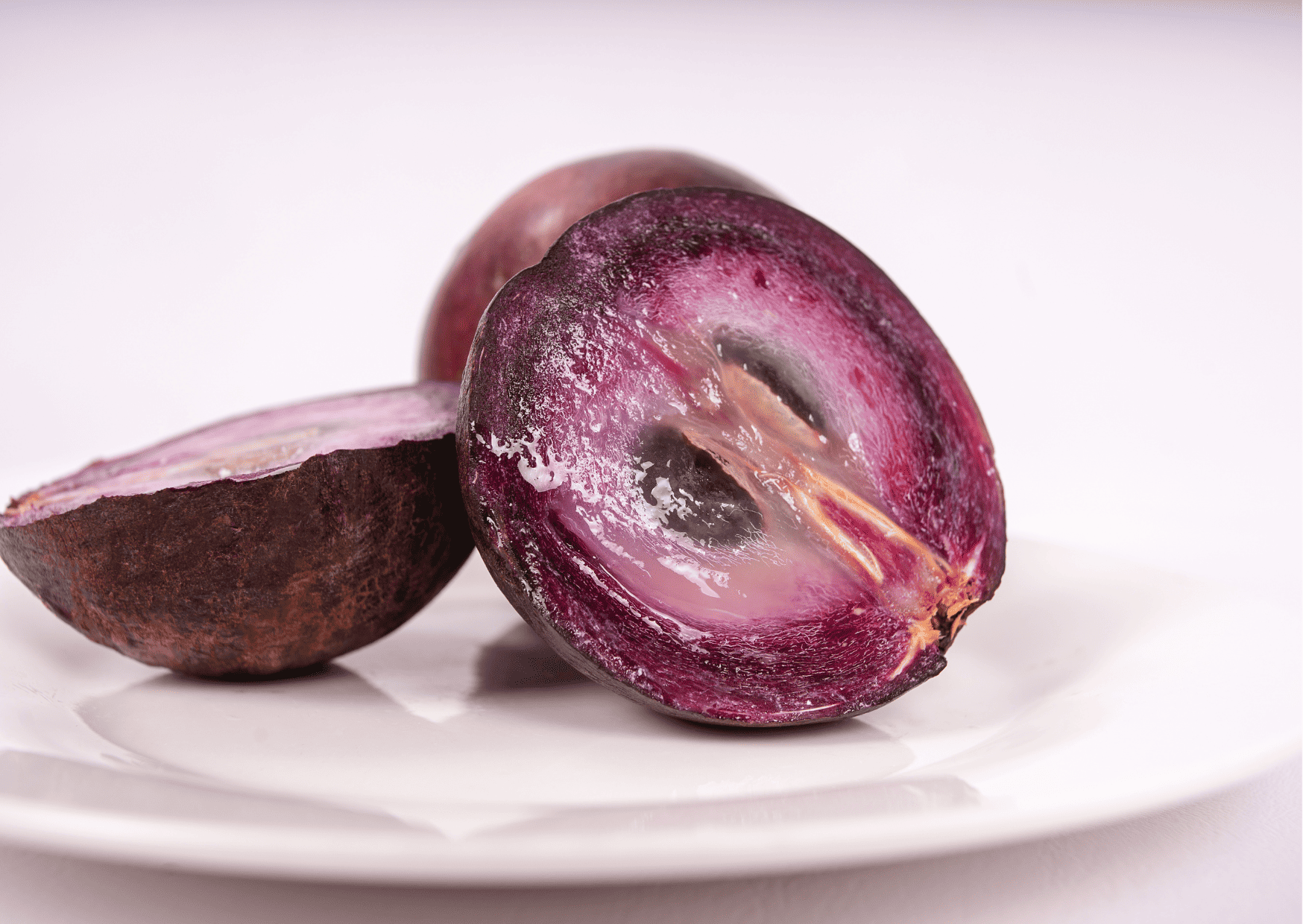
Caimito is a fruit with a purple skin and a sweet, milky flesh inside. It is commonly eaten fresh or used in desserts and is in season from May to September.
Guanábana (Soursop)
Guanábana has a prickly green exterior and a white, juicy flesh inside. It has a sweet and sour flavor and is commonly used to make juice or ice cream. Guanábana is high in vitamin C and is in season from July to September.
Anón (Sugar Apple)

Anón has a green or yellow skin with soft, white flesh inside. It has a sweet and creamy flavor and is commonly eaten fresh or used to make desserts. Anón is in season from June to August.
Carambola (Starfruit)
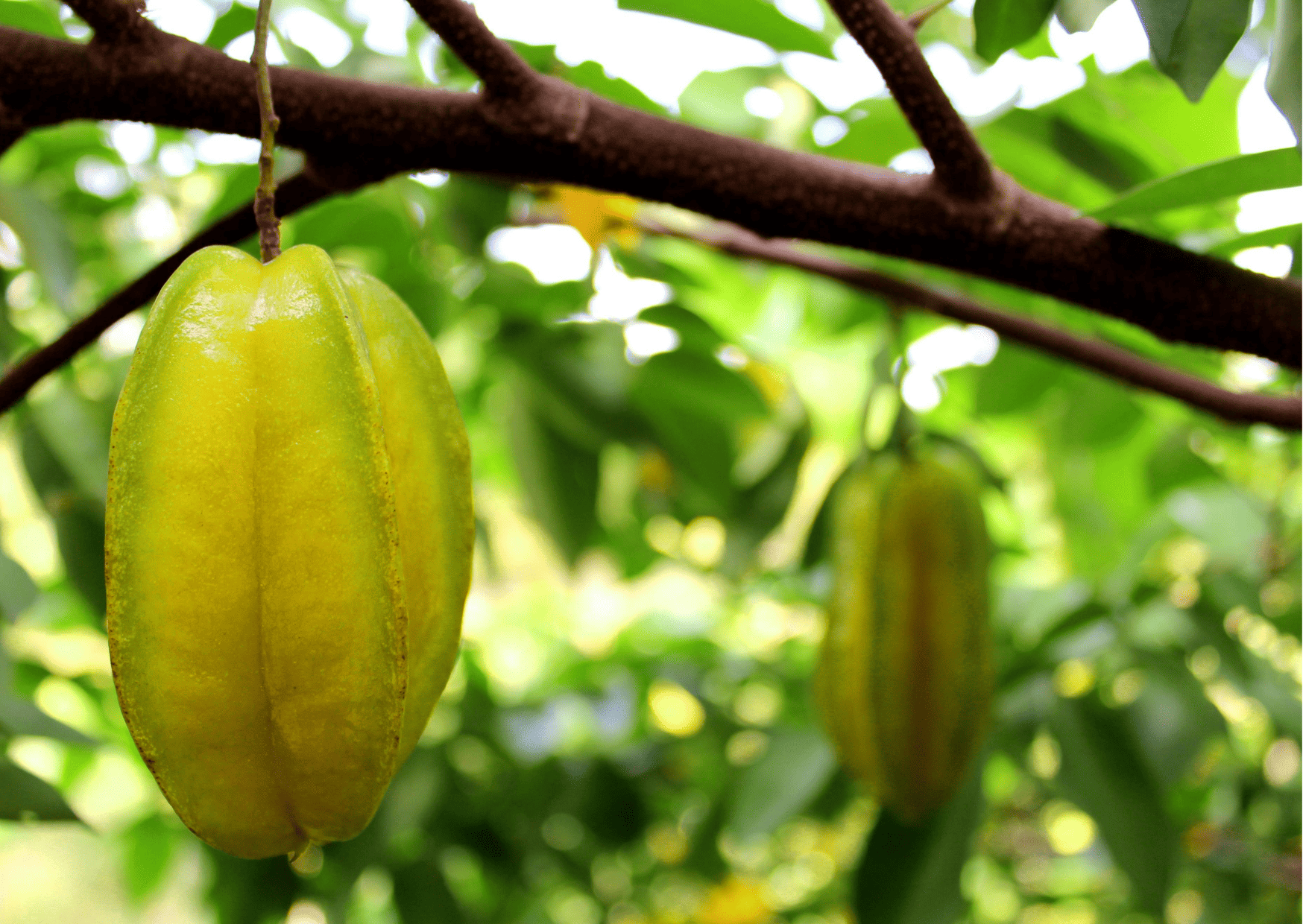
Carambola has a distinctive star shape when sliced and a sweet-tart flavor. It is commonly eaten fresh or used in salads or drinks. Carambola is high in vitamin C and is in season from May to August.
Mamón Chino (Rambutan)
Mamón Chino has a red or yellow exterior with soft, white flesh inside. It has a sweet and tangy flavor and is commonly eaten fresh or used to make desserts. Mamón Chino is high in vitamin C and is in season from August to October.
Tamarindo (Tamarind)

Tamarindo has a brown, pod-like exterior and a sweet and sour pulp inside. It is commonly used to make juice or used in savory dishes. Tamarindo is high in vitamin C and is in season from July to September.
Cacao (Cocoa)

Cacao is the fruit that produces cocoa beans, which are used to make chocolate. The fruit has a hard exterior and a white, sweet pulp inside. Cacao is commonly used to make drinks and desserts and is in season from October to December.
Níspero (Loquat)

Níspero has a yellow-orange skin and a juicy, sweet-tart flesh inside. It is commonly eaten fresh or used to make jams and desserts. Níspero is high in vitamin A and is in season from January to March.
Higo (Fig)

Higo has a purple or green skin and a soft, sweet flesh inside. It is commonly eaten fresh or used in desserts and is in season from June to August.
Ciruela (Plum)

Ciruela has a purple or yellow skin and a sweet and juicy flesh inside. It is commonly eaten fresh or used in desserts and is in season from January to March.
Uva (Grapes)
Uva has a green or purple skin and a sweet and juicy flesh inside. It is commonly eaten fresh or used to make wine and juice. Grapes are in season from January to March.
Melón (Melon)

Melón has a green or yellow skin and a juicy, sweet flesh inside. It is commonly eaten fresh or used in fruit salads and is in season from March to May.
Mango de Agua (Water Mango)
Mango de Agua has a green or yellow skin and a sweet, watery flesh inside. It is commonly eaten fresh or used to make juice and is in season from March to May.
Borojo
Borojo is a fruit that grows in the rainforests of Panama and Colombia. It has a thick, brown skin and a soft, pulpy interior that is high in antioxidants and nutrients. Borojo is commonly used to make juice and is believed to have several health benefits, including improving digestion and boosting energy. Typically used to make juice. Grows year-round.
Chirimoya

Chirimoya, also known as custard apple, is a fruit with a creamy, custard-like flesh that is sweet and aromatic. It has a green, scaly skin and is typically eaten fresh or used to make desserts. Chirimoya is native to the Andean region of South America but is also grown in Panama and other tropical regions. Typically eaten fresh or used to make desserts. Grows from April to June.
Mamey Colorado
Mamey Colorado is a fruit with a reddish-brown skin and a sweet, custardy flesh inside. It is typically eaten fresh or used to make desserts and is high in vitamin A and fiber. Mamey Colorado is native to Central America and is found mainly in Panama, Costa Rica, and Nicaragua. A fruit with a sweet, custardy flesh that is typically eaten fresh or used to make desserts. High in vitamin A and fiber. Grows from May to July.
Pitajaya Dulce
Pitajaya Dulce, also known as sweet pitahaya, is a fruit that grows in the rainforests of Panama and Colombia. It has a pinkish-red skin and a sweet, juicy flesh that is high in vitamin C and antioxidants. Pitajaya Dulce is typically eaten fresh or used to make juice. Typically eaten fresh or used to make juice. Grows year-round.
Guanábana
Guanábana, also known as soursop, is a green, spiky fruit with a sweet, tangy flesh inside. It is typically eaten fresh or used to make juice and is believed to have several health benefits, including boosting immunity and reducing inflammation. Guanábana is native to the Caribbean and Central and South America, and is commonly found in Panama.
Chayote
Chayote is a green, pear-shaped fruit with a mild, slightly sweet flavor. It is commonly used in salads and stews and is high in fiber and vitamins C and B. Chayote is native to Mexico and Central America but is also grown in Panama and other tropical regions.
Chontaduro
Chontaduro is a small, orange fruit with a tough outer skin that is peeled away to reveal a soft, fibrous flesh inside. It is typically eaten fresh or used to make juice and is believed to have several health benefits, including improving digestion and boosting energy. Chontaduro is native to the Amazon region of South America but is also grown in Panama and other tropical regions.
Guaba
Guaba, also known as ice cream bean, is a long, green fruit with a tough outer skin that is opened to reveal a soft, white flesh inside. The flesh is sweet and creamy and is typically eaten fresh or used in desserts. Guaba is native to Central and South America and is commonly found in Panama.
Guayaba de Costa Rica
Guayaba de Costa Rica, also known as Costa Rican guava, is a small, yellow fruit with a fragrant, sweet flesh inside. It is typically eaten fresh or used to make jams and jellies and is high in vitamin C and antioxidants. Guayaba de Costa Rica is native to Central America but is also found in Panama and other tropical regions.
Jobo
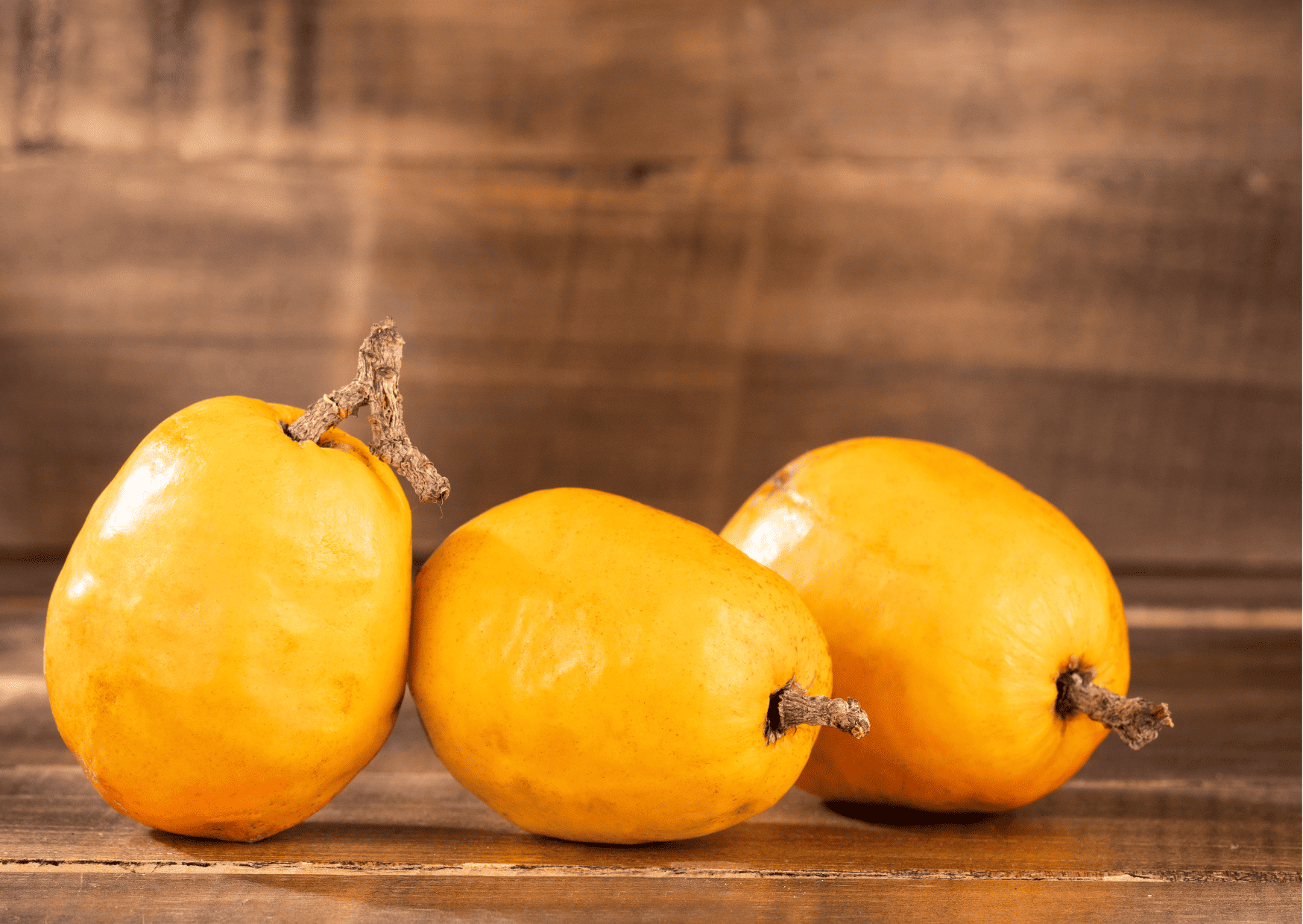
Jobo is a small, round fruit with a thin, edible skin and a sweet-tart flavor. It is typically eaten fresh or used to make juice and is high in vitamin C and antioxidants. Jobo is native to Central America and is commonly found in Panama.
Toronche
Toronche is a small, green fruit with a tart flavor that is often used to make juice or used in cooking. It is high in vitamin C and is commonly found in Panama and other tropical regions of Central and South America.
Naranjilla
Naranjilla is a small, orange fruit with a tart, citrusy flavor. It is typically used to make juice or used in cooking and is high in vitamin C and antioxidants. Naranjilla is native to the Andean region of South America but is also found in Panama and other tropical regions. Grows from January to March.
Papaya Hawaiana
Papaya Hawaiana is a variety of papaya that is commonly grown in Panama and other tropical regions. It has sweet, juicy flesh that is high in vitamin C and antioxidants. Grows year-round.
Best time to visit Panama for fruits season or for travel
The best time to visit Panama for fruit season and travel depends on your preferences and interests.
If you want to experience the country’s fruit season, which typically runs from December to April, you should plan your trip during these months. During this time, you can expect to find a wide variety of tropical fruits in abundance, including mangos, papayas, pineapples, and passion fruit. The fruit season is also a great time to visit local markets and taste traditional Panamanian dishes made with fresh fruits.
If you’re interested in outdoor activities like hiking, birdwatching, and exploring the rainforest, the best time to visit Panama is during the dry season, which runs from December to April. During this time, the weather is typically sunny and dry, making it ideal for outdoor activities.
Check the updated weather in Panama here
However, if you prefer to avoid the crowds and high season prices, you may want to consider visiting during the low season, which runs from May to November. During this time, you can still find a wide variety of fruits, but you may need to look a bit harder as some fruits may not be in season. The low season is also a great time to enjoy Panama’s beaches and water activities as the weather is still warm and pleasant.
Overall, Panama can be visited year-round, depending on your interests and preferences.
About the Author: Ruben, co-founder of Gamintraveler.com since 2014, is a seasoned traveler from Spain who has explored over 100 countries since 2009. Known for his extensive travel adventures across South America, Europe, the US, Australia, New Zealand, Asia, and Africa, Ruben combines his passion for adventurous yet sustainable living with his love for cycling, highlighted by his remarkable 5-month bicycle journey from Spain to Norway. He currently resides in Spain, where he continues sharing his travel experiences with his partner, Rachel, and their son, Han.
